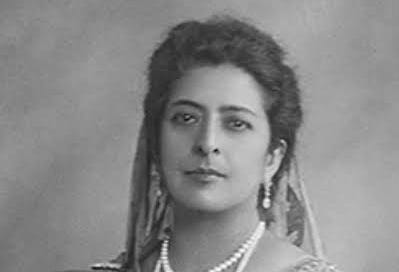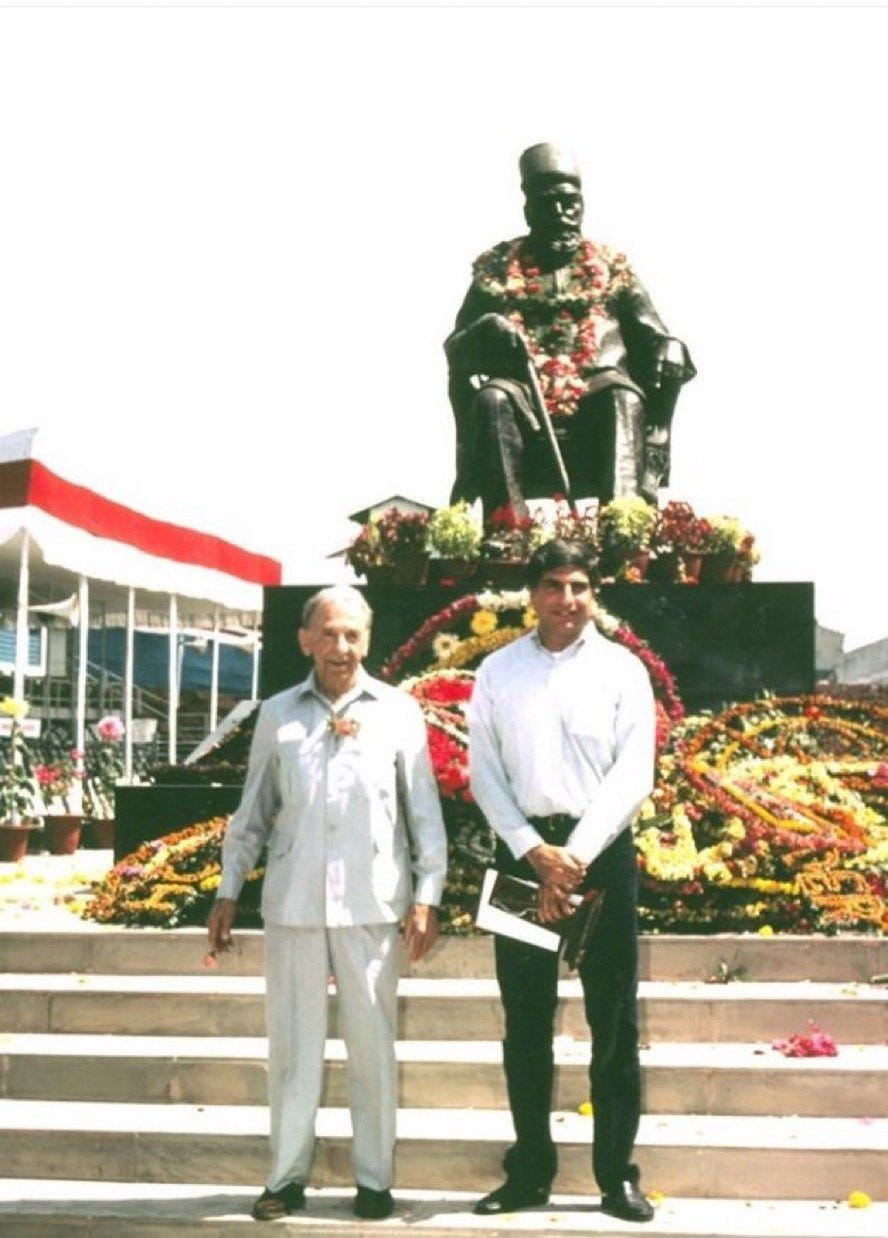The True 'Ratan' of the Tata Clan
This week, India mourned the passing of Ratan Tata, the iconic industrialist and philanthropist who led the Tata Group for over two decades. At 86, he left behind an unparalleled legacy, having transformed the conglomerate into a global powerhouse while retaining the values of trust, integrity, and corporate responsibility. Under his leadership, the Tata Group’s revenues multiplied over 40 times, spreading across diverse sectors and continents. Yet, beyond the boardrooms and grand strategies, Tata was the epitome of humility and grace, a man whose steely resolve was forged in the crucible of the Tata family's ethos. His death not only marks the end of an era but invites reflection on the spirit and resilience that defined the Tata family across generations.
However, to truly understand the foundation upon which Ratan Tata built his remarkable legacy, one must look back in time, to another Tata—Sir Dorabji Tata—and to a lesser-known yet profound chapter in the family’s history: the story of the Jubilee Diamond.
The Jubilee Diamond and a Moment of Crisis
In the early 1920s, India’s first integrated steel plant, Tata Steel, found itself on the brink of financial ruin. Post-World War I expansion plans had stretched resources thin, inflation had soared, and labor unrest coupled with diminished demand from Japan, following the Kanto earthquake, compounded the crisis. By 1924, the company faced a liquidity crisis so severe that Tata Steel could no longer afford to pay its workers’ wages. It was a moment of reckoning for the fledgling Indian industrial giant.
Amidst this dire financial landscape, Sir Dorabji Tata, who was at the helm of the company, faced a monumental decision. Aware that the very survival of Tata Steel—and by extension, the industrial future of India—depended on securing funds, Sir Dorabji took a step that would become the stuff of legend. He and his wife, Lady Meherbai Tata, pledged their entire personal fortune, including the famed Jubilee Diamond, as collateral to secure a loan from the Imperial Bank of India (now the State Bank of India).
The Jubilee Diamond: A Symbol of Sacrifice
The Jubilee Diamond, unearthed in 1895 at the Jagersfontein Mine in South Africa, was a gemstone of breathtaking beauty, weighing an impressive 245.35 carats. Its flawless clarity and exquisite cushion cut made it one of the most coveted jewels in the world. Initially held by a consortium that included Wernher, Beit & Co., Barnato Bros., and Mosenthal Sons & Co., the diamond found its way to Sir Dorabji Tata around 1900. He acquired it for the princely sum of £100,000 as a lavish and heartfelt gift for his beloved wife, Lady Meherbai Tata. Lady Meherbai wore the diamond with grace, dazzling at royal events and state functions, where its brilliance reflected the stature of the Tata family. Yet, in an unexpected twist of fate, this remarkable gem came to symbolize far more than personal luxury. It would become a testament to selflessness, forever linked to a moment of profound sacrifice and an enduring commitment to a greater cause.
In pledging the Jubilee Diamond, along with other personal jewels, Sir Dorabji and Lady Meherbai Tata demonstrated a level of selflessness that few industrialists in history could match. Their total pledge was valued at approximately Rs. 1 crore—a staggering amount at the time—and it allowed Tata Steel to secure the funds necessary to stay afloat. Over the next few years, the company recovered, repaid the loan, and returned to profitability.
A Legacy of Philanthropy
Sir Dorabji's actions during this financial crisis were not merely about saving a company; they were about preserving a vision for India's industrial future. His belief in Tata Steel was rooted in the conviction that it was a crucial pillar for India's economic independence. But Sir Dorabji’s commitment extended far beyond business. Upon his death in 1932, he bequeathed his entire fortune, including the Jubilee Diamond, to the Sir Dorabji Tata Trust. The Jubilee Diamond was sold in 1937 through Cartier, and the proceeds were used to fund some of India’s most important institutions, including the Tata Memorial Hospital, the Tata Institute of Social Sciences, and the Tata Institute of Fundamental Research1.
Lady Meherbai Tata, too, in her lifetime, played an instrumental role in shaping the philanthropic ethos of the family. Her work in health, education, and women’s rights left an indelible mark on the Tata legacy. Together, the couple’s life choices reflected an unwavering commitment to the upliftment of society.
Ratan Tata: A True Heir of Legacy
Years later, Ratan Tata would rise to embody the very values that his ancestors held dear. His leadership, particularly during challenging times, echoed the courage and foresight that Sir Dorabji exhibited when he mortgaged the family’s wealth to save Tata Steel. Ratan Tata's philanthropic endeavours, from funding education and healthcare to spearheading disaster relief, demonstrated a continuation of the Tata family's tradition of using personal and corporate resources for the greater good.
Yet, Ratan Tata’s tenure also stood out for his ability to navigate the complexities of a globalised world while remaining deeply rooted in the values of trusteeship—where wealth is seen not as an end but as a means to improve society.
Who is the True 'Ratan' of the Tata Clan?
The story of the Jubilee Diamond offers a poignant lens through which to view the Tata family’s journey. On the one hand, there is Sir Dorabji Tata, the man who put everything on the line to ensure the survival of Tata Steel, believing it was vital for India's industrial progress. His actions paved the way for the Tata Trusts, which have contributed immensely to India's social and scientific development. On the other hand, Lady Meherbai Tata, with her advocacy for women’s rights and health, personified the compassionate side of this legacy. And finally, Ratan Tata, with his quiet but resolute leadership, brought the Tata legacy into the 21st century, ensuring that the group remained a global leader without losing its soul.
Who, then, do you believe is the true ‘ratan’? Sir Dorabji Tata, with his audacious business gamble? Lady Meherbai Tata, with her philanthropic vision? Or Ratan Tata, who brought the group to unprecedented global heights while remaining steadfast in his values?
Each of them, in their own right, was a ‘ratan’—a gem—of the Tata family. But perhaps the true 'ratan' of the Tata clan is not just one individual, but the collective spirit of sacrifice, integrity, and philanthropy that defines the family’s enduring legacy.
Diamonds are Forever— the “Jubilee Diamond”.
The Jubilee Diamond, originally discovered in South Africa's Jagersfontein Mine in 1895, weighed 650.80 carats in its rough form. It was purchased by a consortium of London-based diamond merchants and sent to Amsterdam, where it was expertly cut by M.B. Barends into a magnificent cushion-shaped diamond, reducing its weight to 245.35 carats (49.070 grams). Initially known as the Reitz Diamond, it was renamed the Jubilee Diamond in 1897 to mark the 60th anniversary of Queen Victoria’s coronation. With its exceptional clarity, the Jubilee Diamond is classified as an E-grade colorless gem and is now ranked as the sixth-largest diamond in the world.
After being owned by a consortium that included Wernher, Beit & Co., Barnato Bros., and Mosenthal Sons & Co., the diamond changed hands around 1900 when Sir Dorabji Tata acquired it for approximately £100,000 as a lavish gift for his wife, Lady Meherbai Tata. Lady Meherbai famously adorned the diamond at royal events and state functions. Upon Sir Dorabji’s passing in 1932, the diamond was bequeathed to the Sir Dorabji Tata Trust. In 1937, the Trust sold the diamond through Cartier, and it was purchased by French industrialist Paul-Louis Weiller.
Today, the Jubilee Diamond is owned by renowned jewellery collector Robert Mouawad, where it remains the largest gem in his illustrious collection.





